Área de título y declaración de responsabilidad
Título apropiado
Eric Parker fonds
Tipo general de material
- Textual record
- Graphic material
Título paralelo
Otra información de título
Título declaración de responsabilidad
Título notas
- Source of title proper: Title based on provenance of fonds
Nivel de descripción
Fundo
Código de referencia
Declaración de edición
Declaración de responsabilidad de edición
Mención de la escala (cartográfica)
Mención de proyección (cartográfica)
Mención de coordenadas (cartográfica)
Mención de la escala (arquitectónica)
Jurisdicción de emisión y denominación (filatélico)
Área de fechas de creación
Fecha(s)
Área de descripción física
Descripción física
4 cm of textual records
689 photographs : prints and negatives
2 compact discs
Área de series editoriales
Título apropiado de las series del editor
Títulos paralelos de serie editorial
Otra información de título de las series editoriales
Declaración de responsabilidad relativa a las series editoriales
Numeración dentro de la serie editorial
Nota en las series editoriales
Área de descripción del archivo
Nombre del productor
Historia biográfica
Lieutenant Colonel Eric Parker was born on June 16, 1896, in London, England. He was a British military Commander with the Indian government who led a little known expedition of approximately 200 Punjabi soldiers from Calcutta to Tibet in November 1921. In addition, Lt. Col. Parker conducted basic and advanced infantry training of Tibetan soldiers from January to March 1923 at the request of the Tibetan military. During his military career, Lt. Col. Parker corresponded with British diplomat, Sir Charles Bell, and various members of the Tibetan government, including the 13th Dalai Lama.
On January 2, 1923, Lt. Col Parker married in Calcutta and, with his wife, travelled back to Tibet on horseback where his training of Tibetan soldiers would begin. After his initial British disapproval, Lt. Col. Parker became accepting of the Tibetan culture and during this period of his life learned to speak in Tibetan, Urdu, Tamil, and Punjabi. The Parkers adapted to Tibet, living in both Yutang and Ganze. After Lt. Col. Parker was released from the military, the couple tried to stay on and establish a trading station, but lasted only one year. During their stay in Tibet the Parkers collected numerous objects, letters, and photographs that provide rare documentation of this period in Tibet’s history (i.e., before the Chinese invasion in 1950). Lt. Col. Parker died in 1988.
Lt. Col. Parker was in the Indian military at a significant time in Tibetan history. From 1918-1921, evidence suggests the Dalai Lama continued to forge closer ties to the British. Since the Simla Convention in 1914, Britain and Tibet had agreed to Chinese ‘suzerainty’ over Tibet, but China refused to ratify the pact and agree to the territorial divisions established. In 1918, fighting broke out between British-trained Tibetan troops and the Chinese, and was later followed by British attempts to mediate and discuss a Tibetan autonomy settlement. In 1920 to 1921, Sir Charles Bell went to Lhasa to urge better relations between Tibet and Britain. Despite Tibetan reluctance to accept further British influence, Charles Bell suggested increasing military aid to Tibet, and it was in 1923 that Lt. Col. Parker arrived to train the soldiers. In 1924-25, pressure from the monks caused the Dalai Lama to dismiss his British-trained officers. Tibetan independence lasted until the overthrow of the Republic of China by the Communists in 1949, and the establishment of the People's Republic of China.
In 2005, photographs and textual records, along with several objects, were donated to the Museum of Anthropology by Lt. Col. Parker’s daughter, Mrs. Mary Noble. Lt. Col. Parker’s grandson, Father Harry Donald, provided valuable contextual information and is currently preparing to write a history of his grandfather’s time in Tibet.
Historial de custodia
Alcance y contenido
The fonds consists primarily of material accumulated and/or created by Lt. Col. Parker during the period of his military duties in Tibet and time spent there after his release from the military (1921-1924). This material includes textual records such as correspondence relating to military matters with Sir Charles Bell, and those written to, and received from, Tibetan officers and the 13th Dalai Lama. A few letters written in Tibetan have been recently translated into English and are included in the fonds. Other textual materials includes handwritten speech and other notes, published documents such as an Almanac (written in Tibetan), newspaper clippings, and miscellaneous items such as philatelic materials and handwritten children's rhymes and songs.
The fonds also contains a collection of black and white photographs and negatives, the majority of which were images taken by Lt. Col. Parker, while others, predate Parker’s time in Tibet. The photographs are housed in two albums (Photograph Collections A and B), and show Tibet primarily in the 1920s. The images depict military and domestic scenes in Tibet including photographs of individuals from all social strata, as well as local architecture and landscapes. Some of the places (e.g., monasteries) no longer exist. The albums also contain more recent colour prints of the many Tibetan objects acquired by the Parkers (and now housed in the Ethnology Collection at the Museum of Anthropology). Some duplicates occur within and between albums. The negatives correspond to prints in one album (Photograph Collection A). Only a small number of negatives have not been printed.
The fonds is arranged in the following 3 series:
- Correspondence
- Photographs
- Miscellaneous Materials
Área de notas
Condiciones físicas
Origen del ingreso
Photographic records were acquired by the Museum of Anthropology by donation from Mrs. Mary Noble of Victoria, B.C. in August 2005. Mrs. Noble is the daughter of Eric Parker. An accrual of negatives and documents was made in October 2005
Arreglo
Arrangement of the textual material was imposed by the archivist (CY), while photographs were kept in their original order within two albums and designated as Collections A & B by Father Donald. These albums are now recognized as 'Photograph Collections A & B' or 'PCA and PCB'
Idioma del material
Escritura del material
Ubicación de los originales
Disponibilidad de otros formatos
Two compact discs were created by Lt. Col. Parker’s grandson, Father Donald, and contain scanned images of photographs and of all textual records (including translations and transcriptions). These discs are stored in Box 1.
Restricciones de acceso
Condiciones de uso, reproducción, y publicación
Instrumentos de descripción
A series, box/file are available. Item lists for Photograph Collections A & B are also included
Generated finding aid
Materiales asociados
Acumulaciones
No further accruals are expected

![Dalai Lama + sectaries [sic] 1912](/uploads/r/null/0/e/0ec2e86ac1e65cd8e4715d2fce7157cc117c921fdba555dd3ad570a0567ca712/a033533c_142.jpg)
![Dalia [sic] Lama bless citizens of Chumbie 1912](/uploads/r/null/a/f/afe260447a400aa6f9f89fd8cbea417076580c0ec1ada727d85f61535b48582d/a033534c_142.jpg)
![PACHEN [sic] Lama](/uploads/r/null/6/5/65a5e5e8538d074d20be1a0ec6f86a8503d330bc9625ca6daabd0a6e6da6bd91/a033535c_142.jpg)
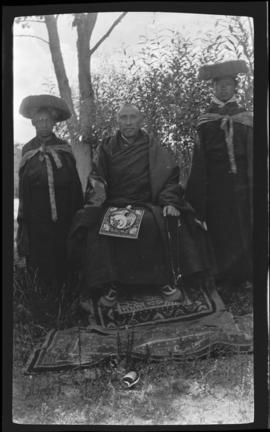
![Oricle ? [i.e. Oracle]](/uploads/r/null/1/8/182bf597a7f5b6a539ae8e175f7ae52a7dd94d3f7e2f48301e5c7cfcc2120af7/a033537c_142.jpg)
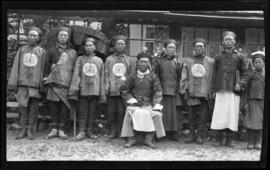
![Oracle Gyentse [?]](/uploads/r/null/1/b/1b0a908ba9be82b8a05fc1f85019eb03b1ddc0a8455f1e4af35bed560615618d/a033539c_142.jpg)
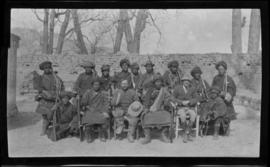
![Tibetan officer and troops (Khamba [escort])](/uploads/r/null/c/6/c6b23634b1c27c7e1364abfbc4f343618442a1dcdf157453680706bca0126a62/a033541c_142.jpg)
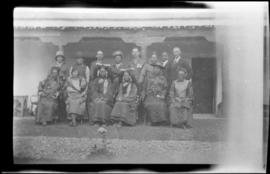
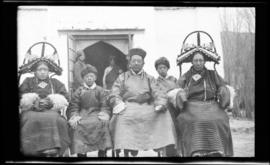
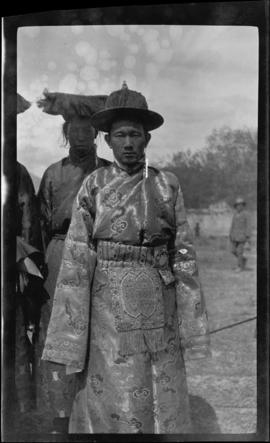
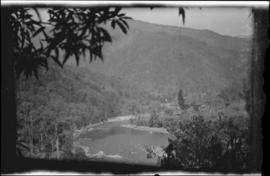
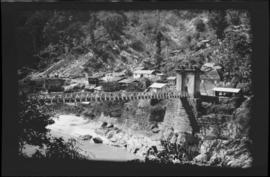
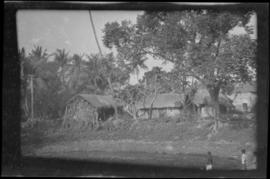
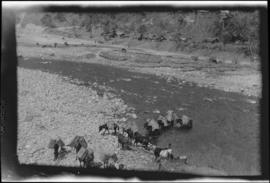
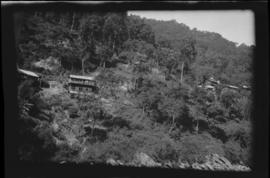
![Road to Gan[g]tok washed out spring 1922](/uploads/r/null/2/d/2d4bd4ed50c1439a1155d1895b8b3c8a5f097f673a13c0be8206ae570082ed31/a033550c_142.jpg)
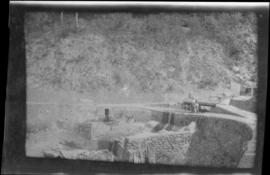
![Kalimpo[n]g homes](/uploads/r/null/e/4/e479303087a4b2dd07bc648417d919d455bb0d6a461a85aabc7ae5111f2947e2/a033552c_142.jpg)